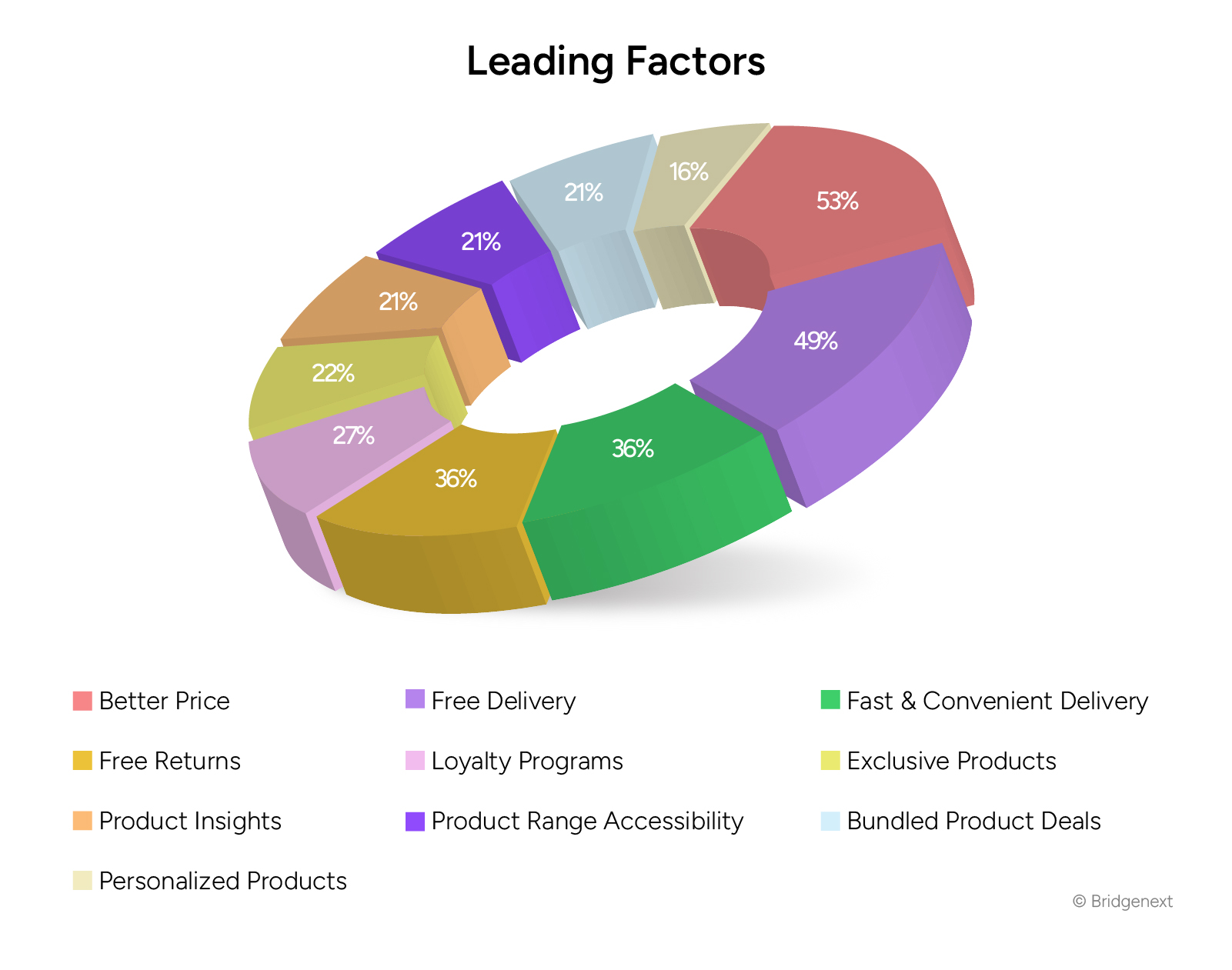Introduction
In the evolving landscape of modern retail, the Direct-to-Consumer (D2C) model fosters closer customer connections, enabling personalized experiences and rapid feedback. Hybrid D2C brands blend online convenience with the tactile benefits of physical stores and pop-up events, addressing consumer desires for quick online shopping and engaging in-person experiences. As consumer expectations shift towards integrated shopping, D2C brands are blurring the boundaries between online and offline retail. This shift sees CIOs like you evolving from traditional IT overseers to value creators, driving revenue growth, enhancing customer loyalty, and creating competitive advantages through innovative digital initiatives. Positioning IT as part of the business’s strategic imperatives is crucial to solidify your role as a business partner and stay relevant. Embracing a digital product mindset in this dynamic D2C landscape allows you to harness the talent, scale, and assets of IT, reimagining and reshaping its mission to create both short- and long-term value for your company, revolutionizing your role in the process.
The Transition to Become the Value Creators
Historical Role of CIOs
Historically, the CIO’s role necessitated establishing and maintaining the essential digital infrastructure to enable online sales and marketing. This included:
- Managing e-commerce platforms
- Ensuring website uptime
- Handling payment gateways
- Protecting customer data
The main goal was to focus on the backend operations, ensuring the technology stack was reliable, secure, and cost-effective.
For example, a CIO in a D2C apparel company might have focused on implementing scalable cloud solutions to manage the website traffic during peak shopping seasons, ensuring that the site could handle large volumes of transactions without crashing. They would have also been responsible for integrating various systems, such as inventory management, customer relationship management (CRM), and order fulfillment systems, to ensure smooth operations and reduce redundancies.
As a result, IT departments were often perceived as cost centers —functions that incur costs and require funding but do not directly generate revenue. However, with the emergence of the hybrid D2C landscape, the role of CIOs is transforming. Today, there is an expectation for CIOs to be forward-thinking, staying abreast of rapidly changing technologies, building new capabilities, and proactively addressing market demands by embracing digital, experience-led products.
Changing Nature of D2C Businesses Adapting to Consumer Demands
Over the past two years, the D2C business landscape has undergone significant transformation. As a CIO, your role now emphasizes exclusive and personalized products that cater to individual preferences and enhance the shopping experience. Leveraging the accessibility of diverse product ranges and bundled product deals, you need to implement strategies that help draw consumers to D2C products due to their higher perceived quality at lower costs, which is more than just implementing an infrastructure. You’ll need to set up a path to drive sales directly with an improved shopping experience, fostering customer loyalty. With such strategy implementation, your business will have visibility over the entire customer journey. As changing factors continue to shape consumer expectations, D2C businesses are rapidly adapting to stay competitive and meet the evolving demands of their customers. The leading factors encouraging shoppers to prefer the D2C brands are:

Emerging Role – Value Creators with Redefined Strategies
The hybrid D2C landscape sees CIOs now central to driving business value. Their strategic involvement extends beyond managing technology to leveraging it to create new business opportunities. Modern CIOs are catalysts for innovation, directly influencing revenue growth, customer experience, and competitive positioning. CIOs define success in this new model by thinking creatively about how technology can drive growth. Understanding business priorities and leveraging the scale and execution capacity, they integrate these priorities into the IT ecosystem. This proactive approach unlocks and realizes the benefits of digital initiatives, with CIOs owning this agenda.
Let’s delve into specific strategies that can help you thrive in this transformative role.
-
Customer-Centric Innovations
One significant way you can create value is by driving customer-centric innovations. Leveraging advanced technologies to create personalized and engaging customer journeys that span digital and physical touchpoints becomes essential. Implementing sophisticated CRM systems that aggregate data from various sources provides a 360-degree view of the customer, personalizing omnichannel marketing efforts, recommending products, and tailoring shopping experiences to individual preferences.
A prime example is Nike, which has seamlessly integrated its online and offline channels to offer a cohesive customer journey. Nike’s CIO oversees the integration of its e-commerce platform with its physical stores, enabling features such as online ordering with in-store pickup, real-time inventory visibility, and personalized in-store experiences through mobile apps. This omnichannel approach not only enhances customer convenience but also drives sales by creating multiple avenues for customer engagement.
-
Enhancing Supply Chain Transparency
Your role extends to enhancing supply chain transparency and efficiency by implementing real-time tracking of products from manufacturing to delivery, building customer trust. Additionally, leveraging AI-powered analytics to identify emerging market trends and gain insights into customer preferences allows your company to proactively adjust product offerings and marketing strategies.
Warby Parker is one example, a D2C eyewear brand that has successfully blended its online presence with offline retail stores. The company’s CIO has implemented virtual try-on technology powered by augmented reality (AR), allowing customers to see how different frames look on their faces using their smartphones. This technology is integrated with their physical stores, where customers can receive personalized assistance and finalize their purchases. This innovative approach not only attracts online shoppers but also enhances the in-store experience, driving overall brand loyalty.
-
Fast-Paced Market Adaptability
Leading the charge in implementing agile methodologies across organizations, you create cross-functional teams that can rapidly develop, test, and deploy new features and services. Agile practices enable quick responses to changing market conditions and consumer demands, ensuring relevance. By focusing on driving value to your brand with innovative technology implementations, enhanced customer experiences, and agile operational strategies, you play a crucial role in helping D2C brands thrive in an increasingly competitive and dynamic market.
For instance, Glossier, a beauty brand that operates on a hybrid D2C model, uses agile methodologies to continually refine its product offerings based on customer feedback. The CIO oversees the deployment of digital tools that collect and analyze customer reviews and social media interactions, allowing the company to iterate on its products and services rapidly. This agile approach ensures that Glossier can stay ahead of trends and maintain a loyal customer base.
CIOs are now more focused on driving value to their brands with innovative technology implementations, enhanced customer experiences, and agile operational strategies. This is making your role crucial in helping D2C brands thrive in an increasingly competitive and dynamic market.
Closing the Gaps and Moving to Growth
As a CIO in the D2C business model, you and your team face unique challenges that can be transformed into opportunities for creating significant value. By recognizing these specific pitfalls and employing strategic approaches to address them, you can solidify your role as a value creator within your organization.
Common Pitfalls in D2C Business Models
-
Siloed Customer Data
In the D2C model, data often comes from online stores, physical outlets, social media, and customer service interactions. This can lead to siloed data, making gaining a unified view of the customer challenging.
Approach to Creating Value
- Invest in Customer Data Platforms (CDPs) that integrate data from all touchpoints, providing a 360-degree view of the customer. This integration enables personalized marketing and improves customer experience.
- Use Machine Learning (ML) to analyze unified data, uncover patterns, and predict customer behavior, leading to more effective marketing strategies and higher customer retention.
-
Inconsistent Customer Experience
Managing a seamless customer experience across online and offline channels can be difficult, leading to inconsistent interactions that frustrate customers.
Approach to Creating Value:
- Create a cohesive customer journey by integrating online and offline experiences. Implement tools like unified customer profiles and synchronized inventory systems to enhance the customer experience.
- Use data insights to personalize interactions at every touchpoint, making customers feel valued and understood. This includes personalized emails, recommendations, and tailored customer service.
-
Rapid Technology Changes
The pace of technological advancements can make it challenging to stay updated, leading to outdated systems that can hinder growth and competitiveness.
Approach to Creating Value
- Foster a culture of continuous learning and innovation within your IT team. Encourage regular training and certifications to stay abreast of the latest technologies.
- Adopt agile practices to implement and adapt new technologies quickly. This flexibility allows you to respond promptly to market changes and technological advancements.
-
Security Vulnerabilities
Handling customer data and online transactions increases the risk of data breaches and compliance issues, which can damage customer trust and result in financial penalties.
Approach to Creating Value
- Invest in advanced cybersecurity solutions, conduct regular security audits, and ensure compliance with data protection regulations.
- Develop a comprehensive risk management plan that includes incident response strategies and regular staff training on security best practices.
-
Over-Reliance on Automation
While automation can streamline operations, excessive reliance on it may lead to a lack of personalized interactions and customer dissatisfaction.
Approach to Creating Value
- Ensure that automation complements human oversight, such as using chatbots for initial queries but escalating complex issues to human agents, to maintain a balance between efficiency and personalization.
- Train the customer service team to use data insights from automated systems to enhance personalized customer interactions and foster deeper customer relationships.
Conclusion
Looking ahead, CIOs’ strategic foresight and commitment to continuous innovation will ensure that hybrid D2C brands remain agile, responsive, and poised for long-term success. By fostering cross-functional collaboration and focusing on hyper-personalization, CIOs will continue to shape the future of retail, transforming customer expectations and setting new benchmarks for excellence in the industry. As value creators, you are not just part of the transformation but are the driving force behind it, leading your organization into a new era of digital-first, customer-centric retail experiences.
Takeaways on How to Get Started
Here are some actionable strategies to ensure your department is driving value for your organization:
- Assess Current Technology Infrastructure by conducting a comprehensive audit of existing technology infrastructure to identify gaps and opportunities for improvement.
- Evaluate the scalability, flexibility, and resilience of current systems to ensure they can support a hybrid D2C model.
- Implement advanced analytics tools to gather and analyze customer data across all touchpoints.
- Invest in technologies such as mobile point-of-sale systems, real-time inventory tracking, and IoT-enabled devices to enhance in-store experiences.
- Implement loyalty programs and personalized incentives to foster long-term customer relationships.
- Use advanced analytics to identify high-value customers and create targeted retention strategies.
- Invest in building a robust and adaptable digital infrastructure that can handle the dynamic demands of a hybrid D2C model.
Connect with us today to discover how our expertise can help you drive value and achieve long-term success.
References:
www.emarketer.com/insights/d2c-explained/
www.forbes.com/councils/forbestechcouncil/2019/10/07/how-nike-is-using-analytics-to-personalize-their-customer-experience/
lani-loves.com/unveiling-glossiers-data-tracking-and-marketing-strategies/
etailconnectwest.wbresearch.com/blog/how-warby-parker-is-succeeding-with-a-thoughtful-omnichannel-strategy
sharpencx.com/warby-parker-omnichannel-retailing/



